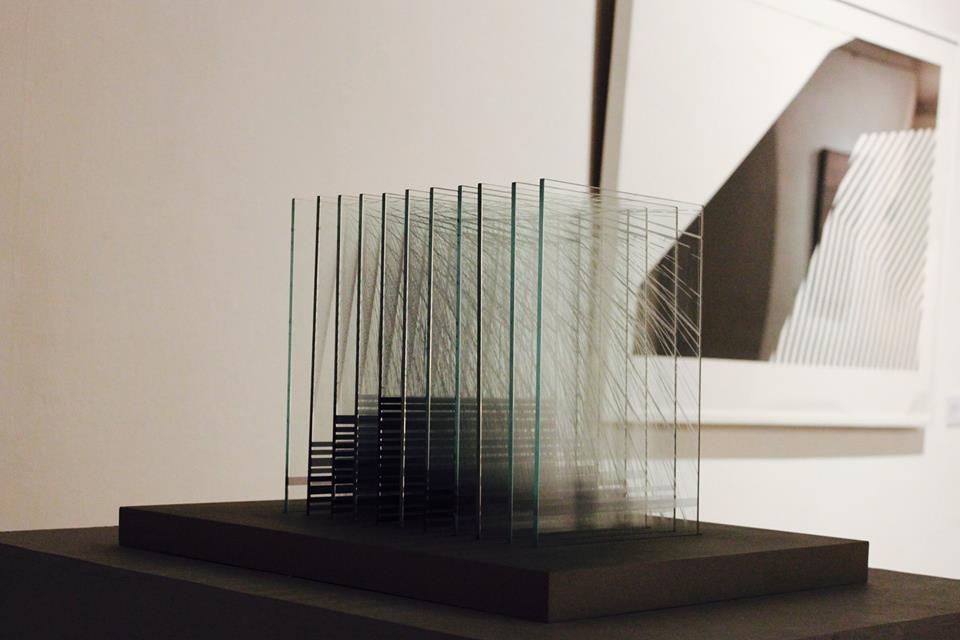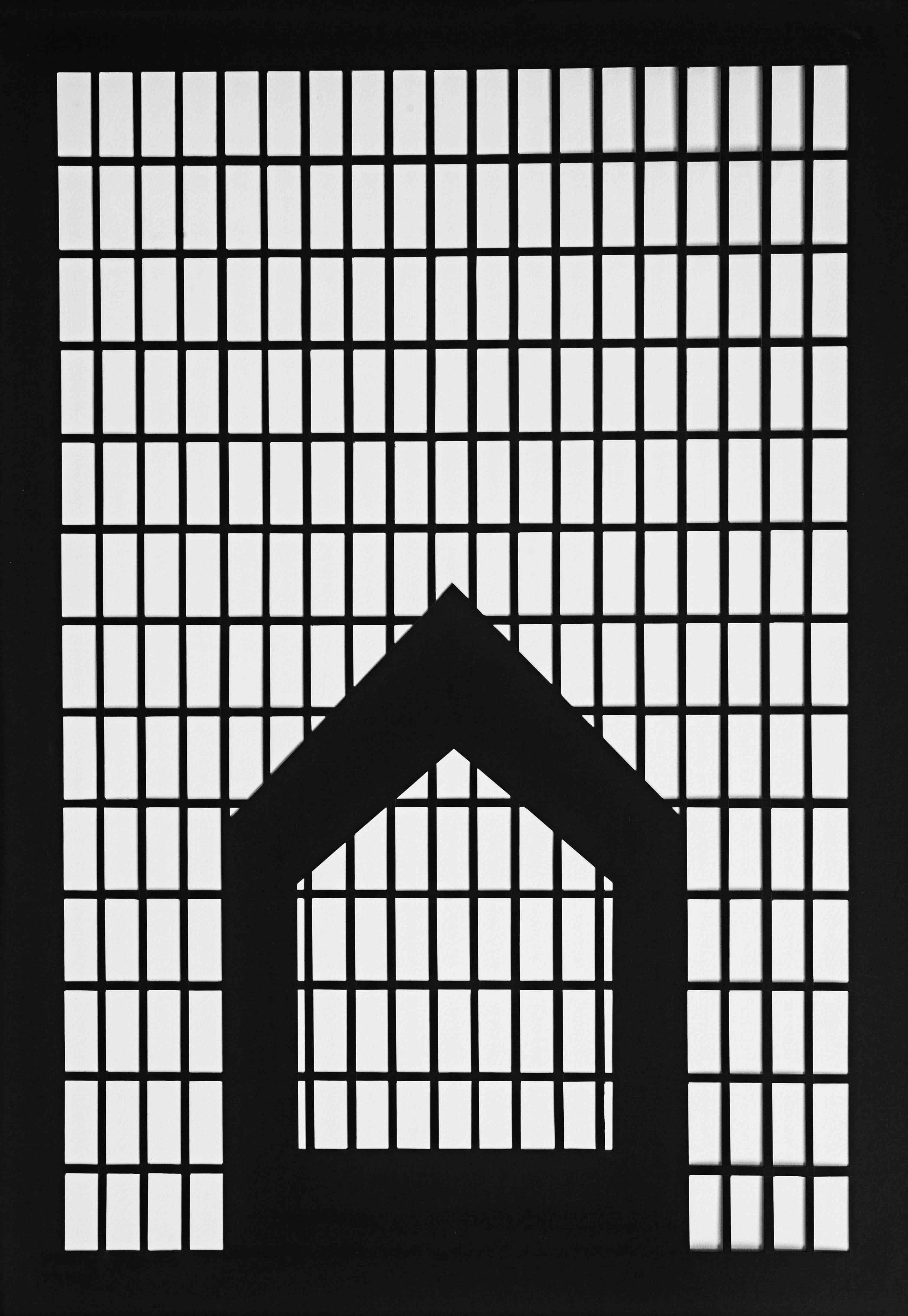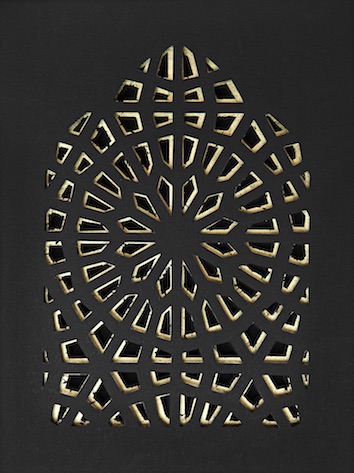NOIR
RECENT WORK BY CHETNAA
CURATED BY KANIKA ANAND
I.
“There’s something about black. You feel hidden away in it.”
An immersion in darkness, or a negation of light, Noir is an exploration of ‘blackness’ as both material and method in artistic production. A natural progression from the body of work that preceded it, where white remained the central focus of Chetnaa’s spatial wanderings; Noir delves into the obscure darkness of living spaces. Evolved from mapped memories of her city, a matrix of lines instruct and assist in graphically dividing material space, and in doing so, also address the dialogical discourse on architectural space.
Noir derives its name and sensibility from the genre ‘noir’: most widely associated with stylish Hollywood crime dramas and literature of the 1940s and 50s. Fittingly inspired by an urban environment that is marked by oblique and vertical lines, neon signs and mysterious back alleys, the exhibition is a collection of architecturally inspired art presented in a dark viewing space. The absence of colour fosters interaction through an act of representational negation causing the viewer to experience a thing that is both not there and there- an imminent presence.
Devoid of heroes and femme fatales, Chetnaa’s take on Noir is an intense study of the colour black, visually rooted in low-key lighting, depth of field and an air of suspense.
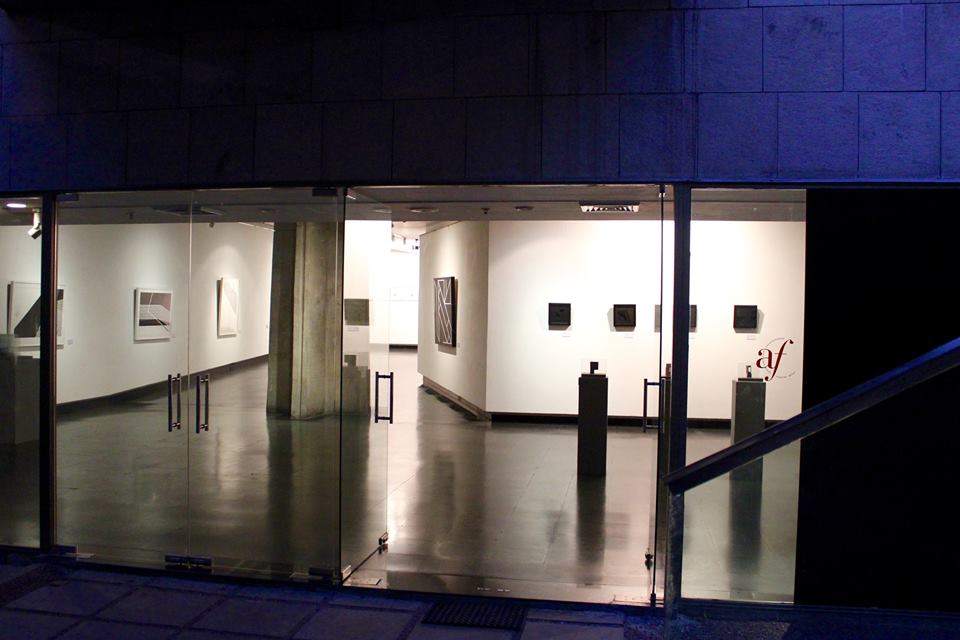


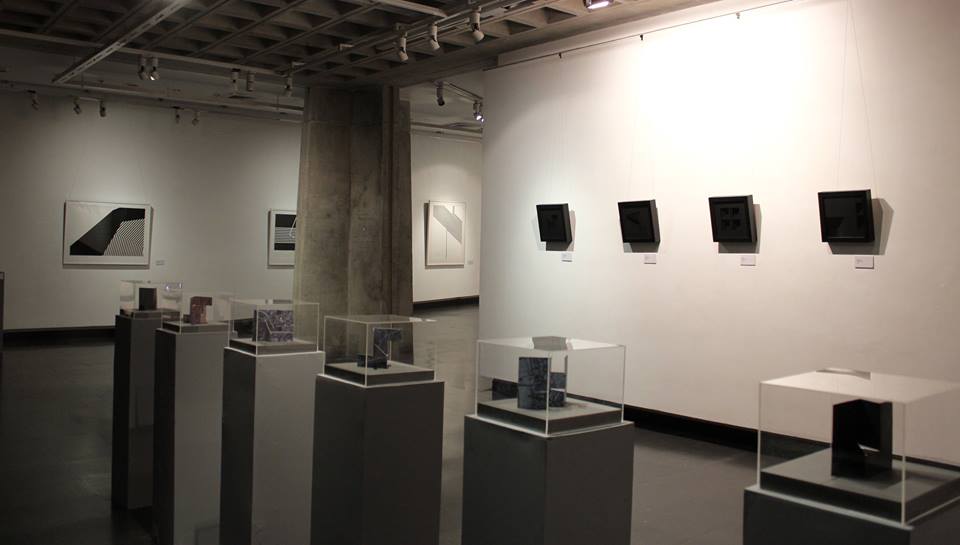
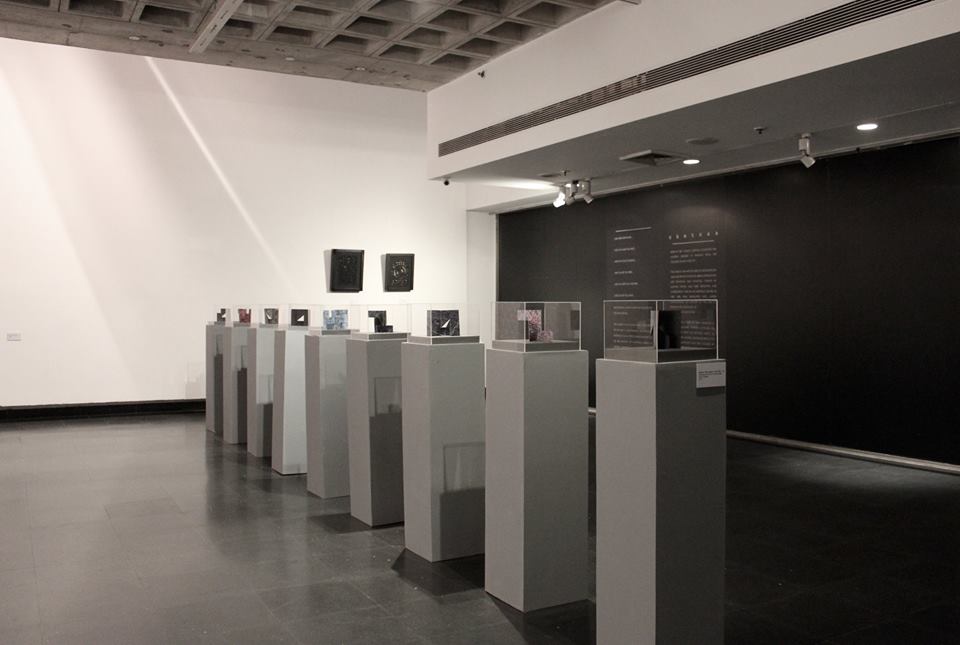
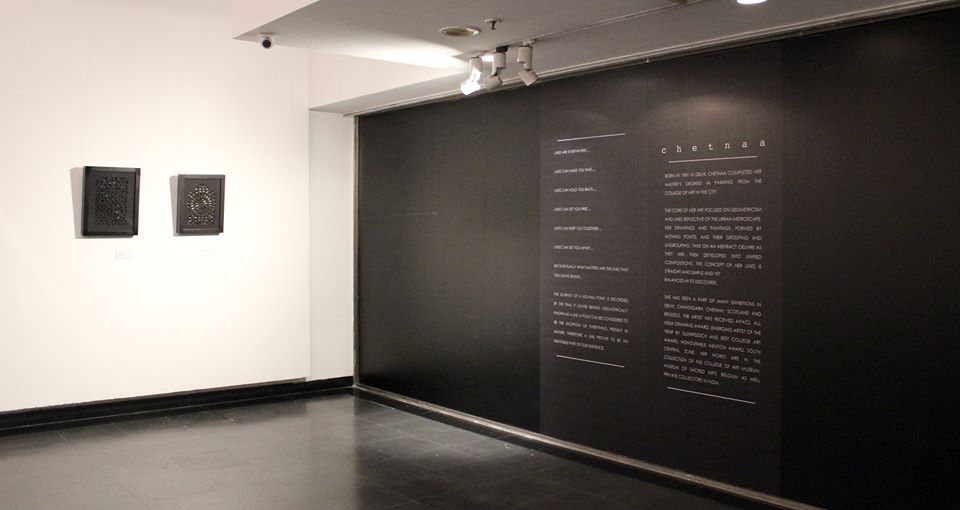

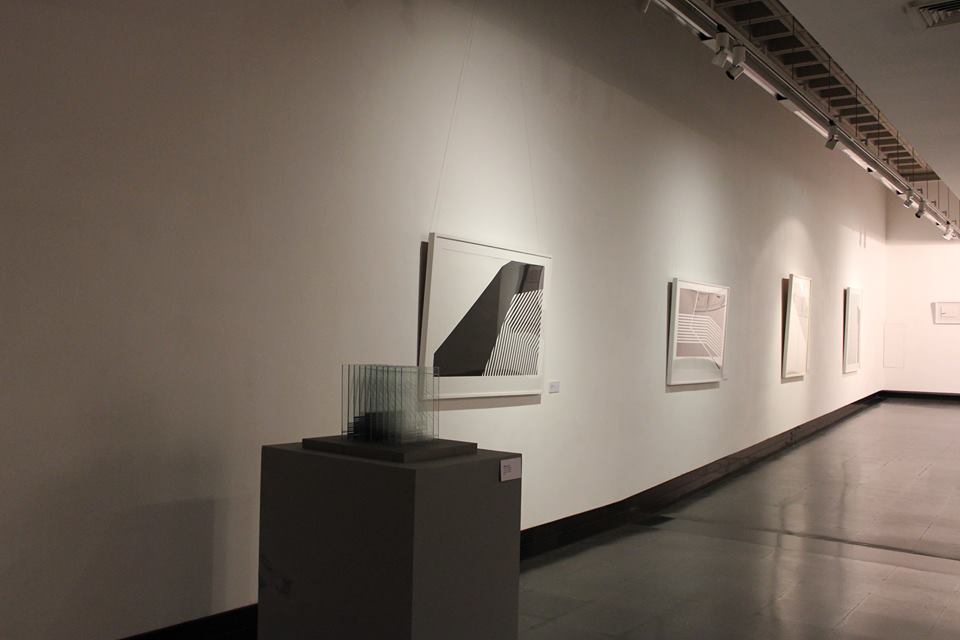
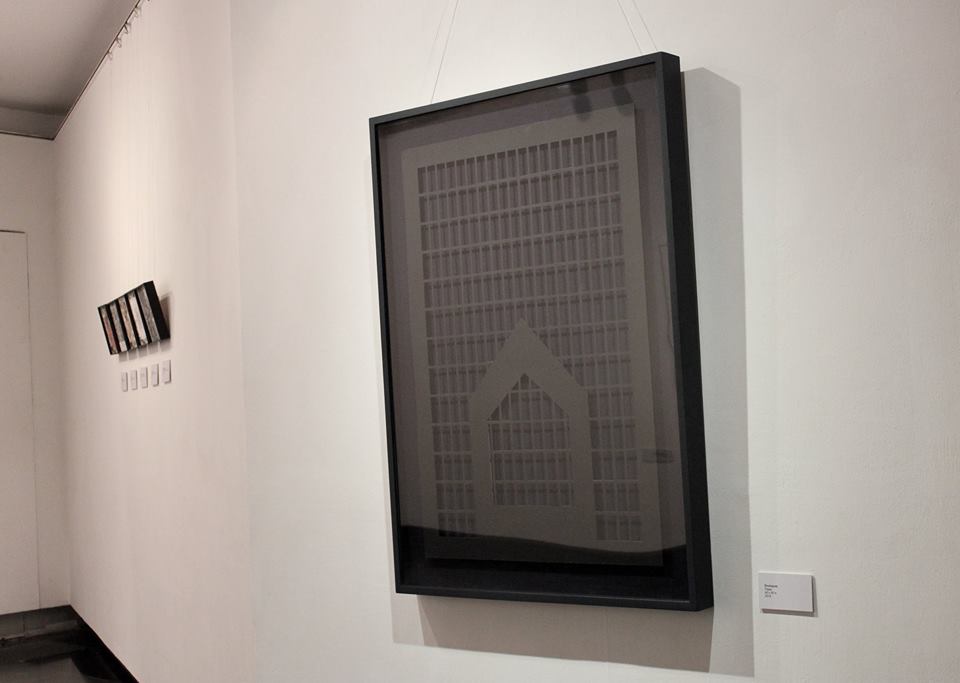

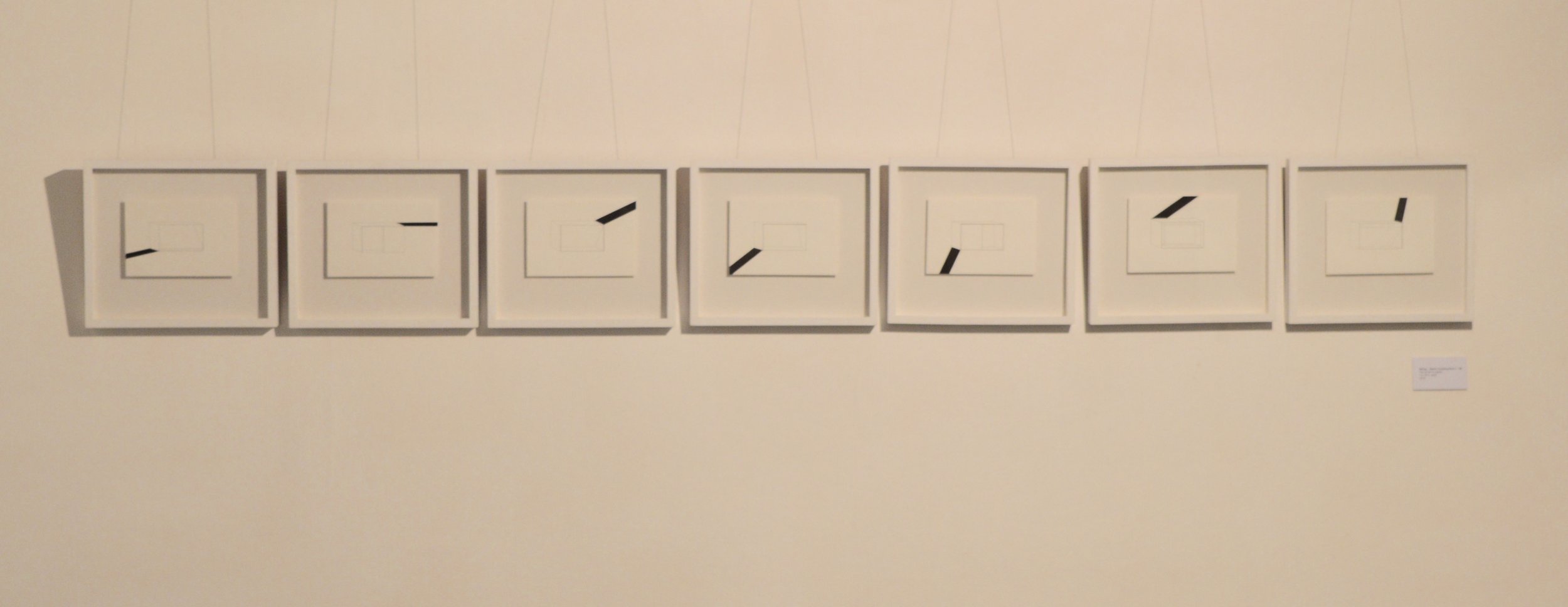
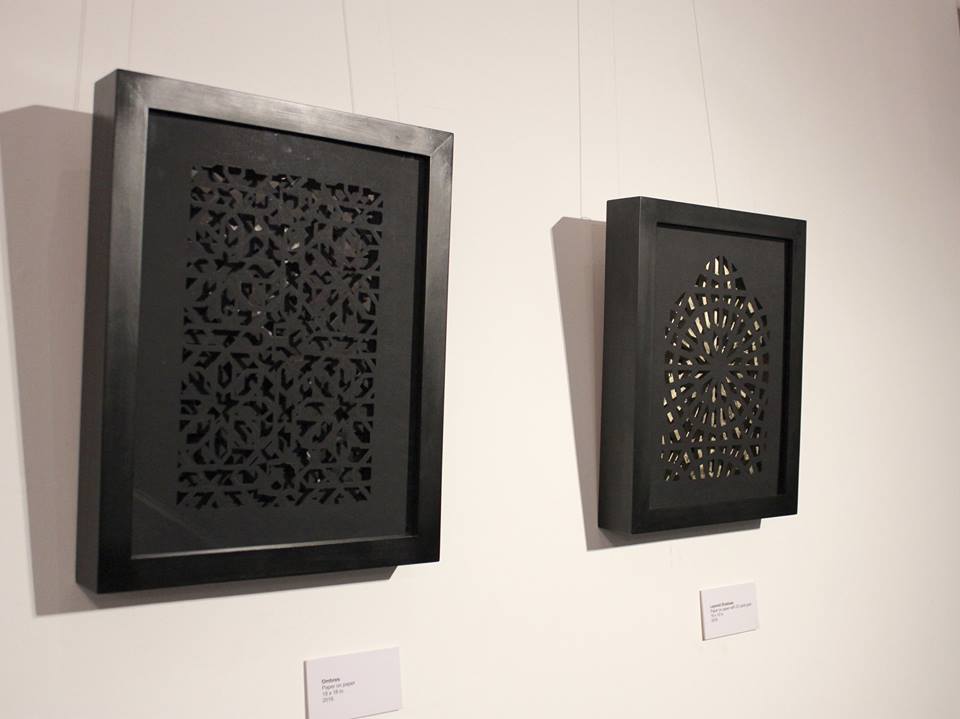
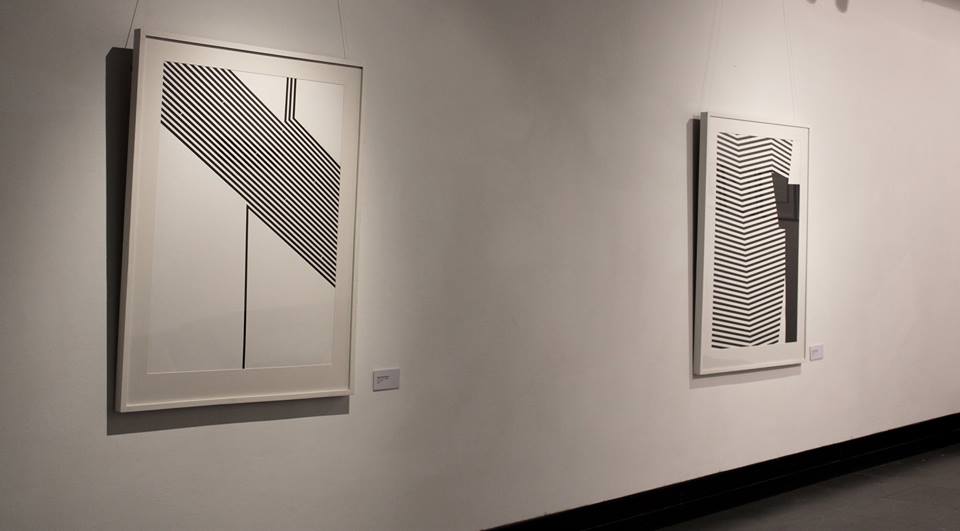

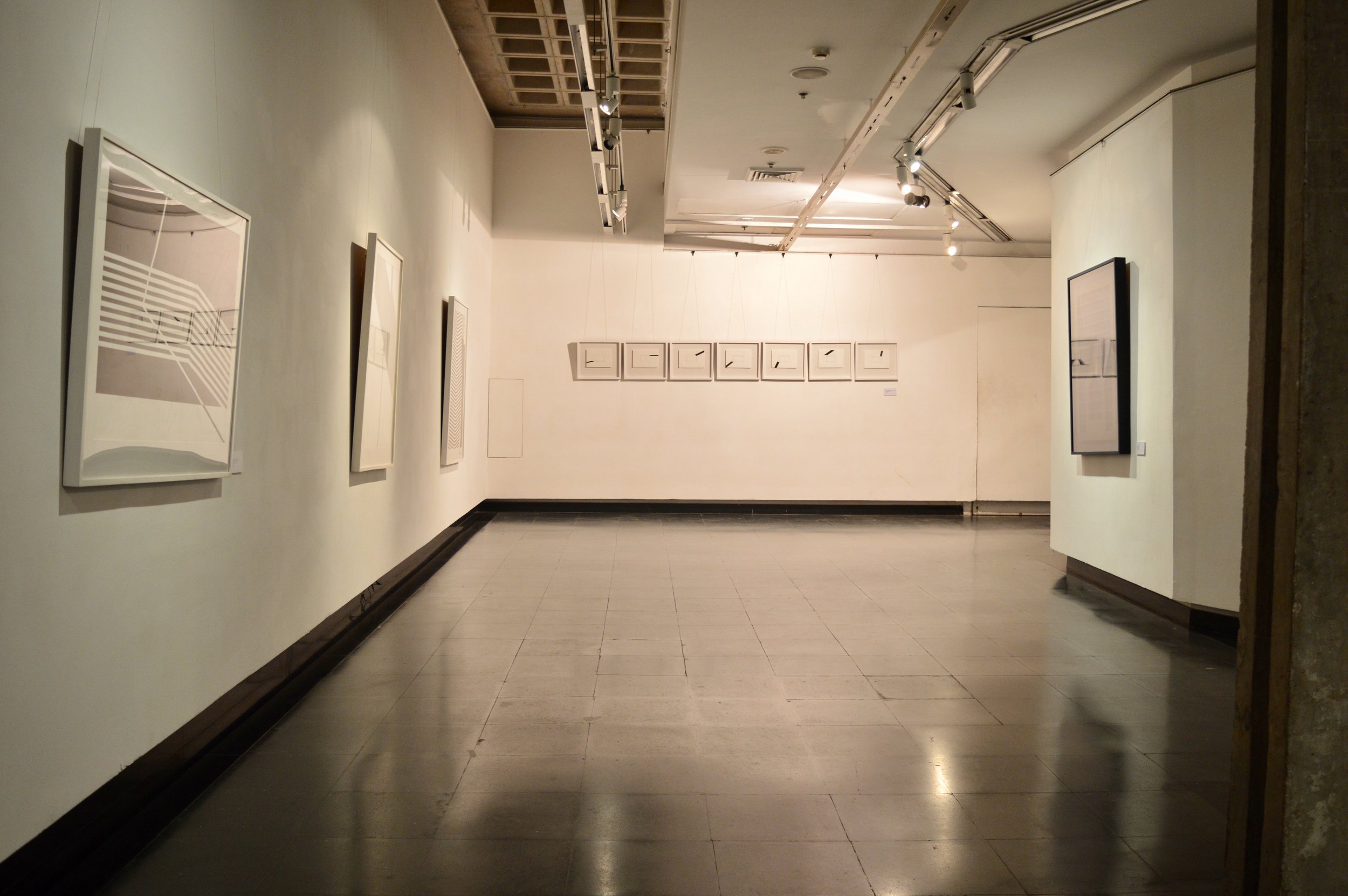
II.
“A building is a harboring thing.” The function of the house to protect and provide privacy, psychological as well as physical, is an ancient one... Contradiction between the inside and the outside may manifest itself in an unattached lining which produces an additional space between the lining and the exterior wall ... layers between the inside space and the outside space can be more or less contrasting in shape, position, pattern, and size.”
Chetnaa’s reductive art forms are abstracted from Delhi’s ‘built’ history, from the façades that divide social space from private space. This is most pronounced in her jaali (latticed screens) and layered paper works, where meticulously hand cut ornamental patterns reminiscent of Indo-Islamic architecture resonate the ambiguous relationship between internal space and external form. Traditionally constructed to screen women from observing court proceedings, the jaali serves as a metaphor for social inclusion or exclusion.
The exhibition therefore, is a way to explore the sensory and conceptual spatial experiences of a ‘closed’ architecture, where the permeability between interior and exterior is defined or mediated by their different openings and windows. By deliberately ‘blackening out’ these openings, Chetnaa’s drawings lend to the mysteriousness of the in-between space, representing a border or threshold- a line of tension.
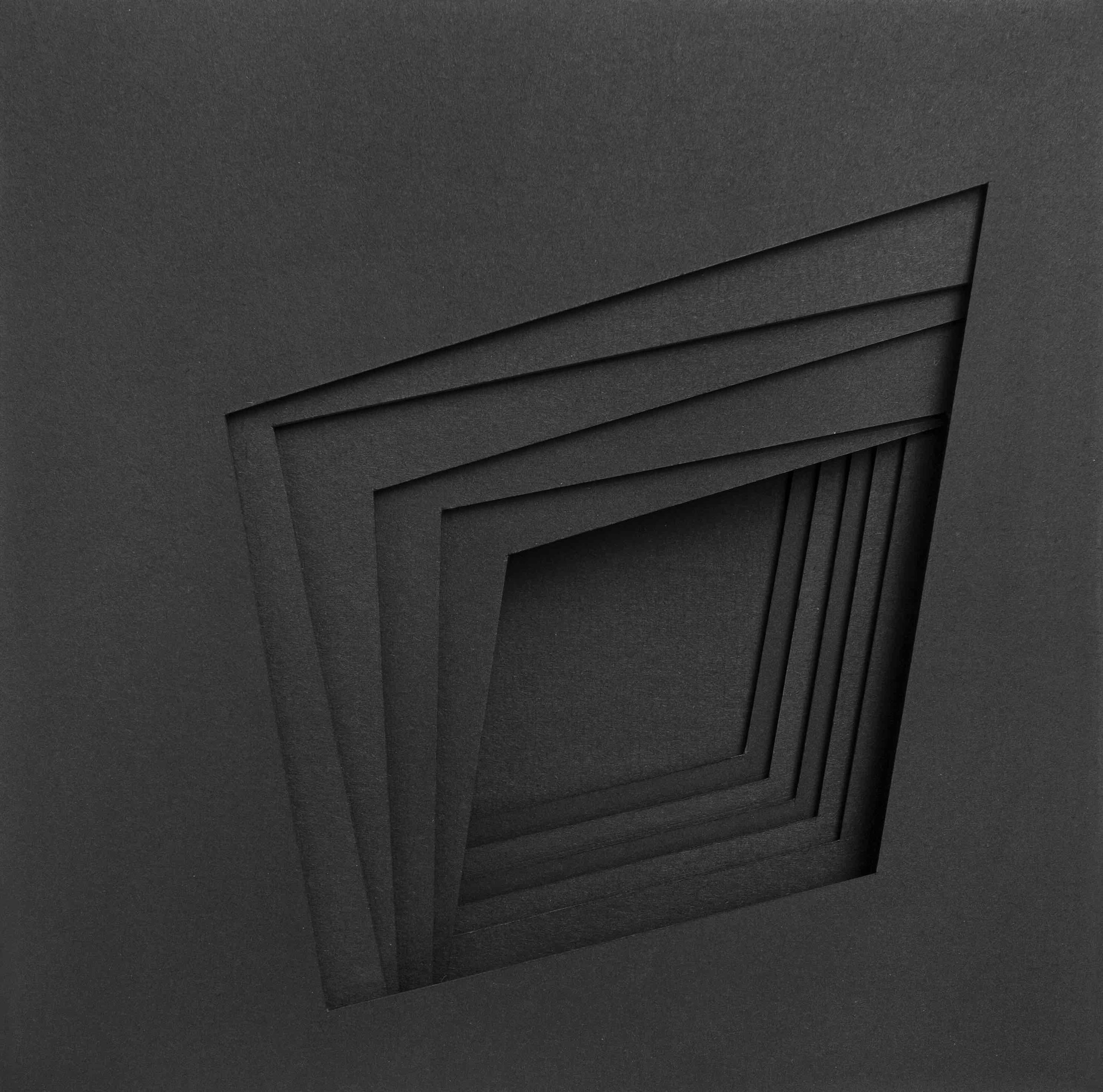

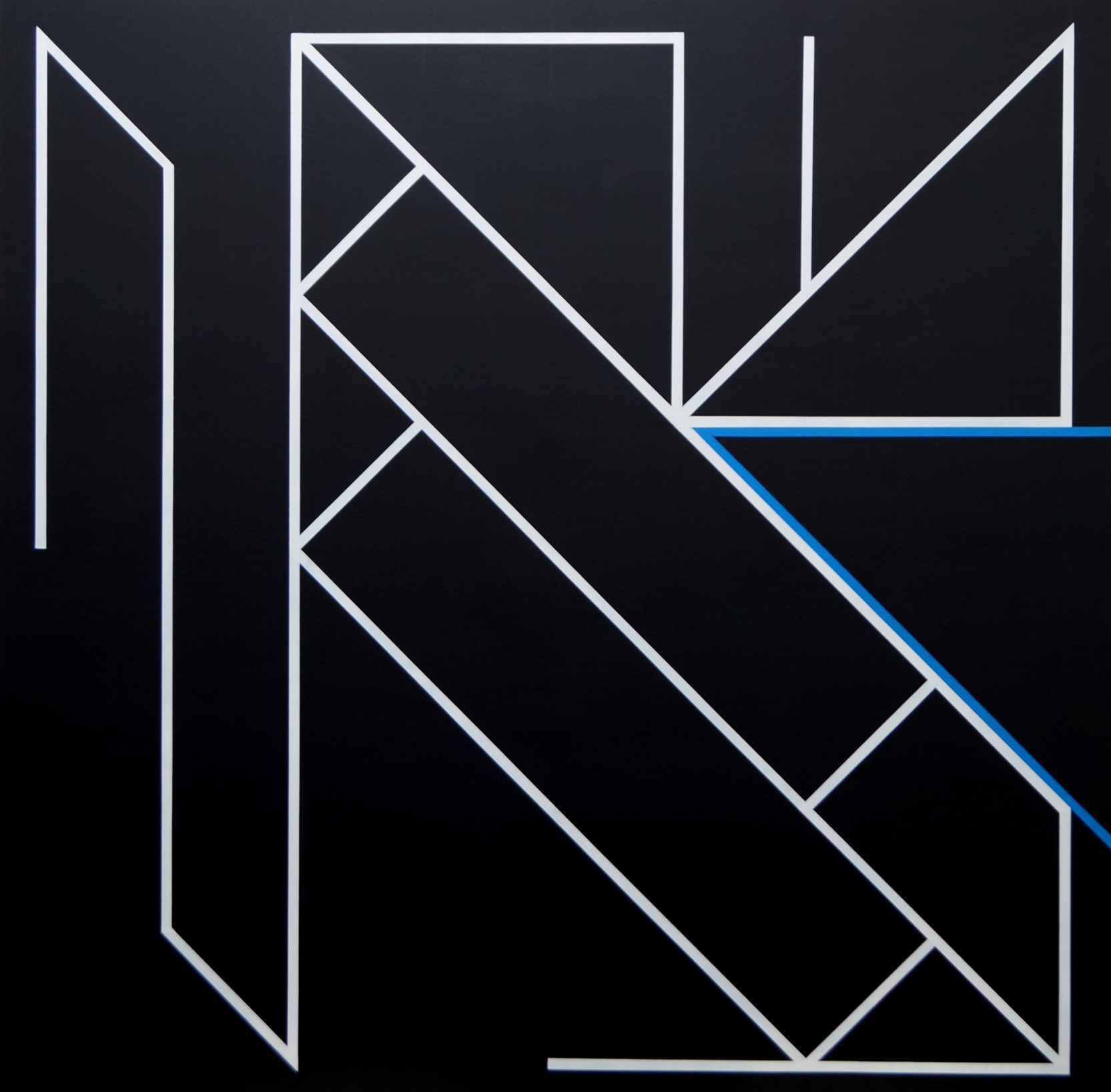

From point to point drawn on paper, the line is extended beyond a two-dimensional surface to a three dimensional form. Movement between the lines, in time and space, traces the artist’s interest in movement of the self, and the constructed lines that shield us from the outside world. These lines are the core elements of networks and boundaries- political, cultural, or social.
Can a stable perceptual balance be achieved between such seemingly elusive notions as interiority and exteriority? Is it the conceptual instability of this ambiguous condition that lends it aesthetic power?
III.
“The outside is not a fixed limit but a moving matter animated by peristaltic movements, folds and foldings that together make up an inside: they are not something other than the outside, but precisely the inside of the outside.”
A fold makes a surface or a line into a three-dimensional structure. Material science, the Japanese philosopher would say, has its model ‘origami’- the art of the paper fold. Chetnaa’s employment of ‘the fold’ is in fact, inspired by origami but is shaped into architectural objects that subvert, as Deleuze suggests, the threshold of inside and outside space. Her folding of card-paper with tracings of a map into an object also lends to defining it as an urban structure.
Mapping enables a renewed understanding of territory, an unfolding of urban space. By tracing parts of city maps onto her origami objects, Chetnaa reimagines boundaries and the scope of what they represent. Within each fold, lies a potentially new way of imagining and projecting alternative possibilities.
Noir then, is a presentation of an intense, emotionally charged space where the viewer’s eye is led from bold lines to latticed screens, mapped renderings to layered geometric forms; to the inside, the outside and the in-between. Amidst the shadows, Chetnaa’s art attempts to draw out the changing nature of spatial and temporal structures in today's world.
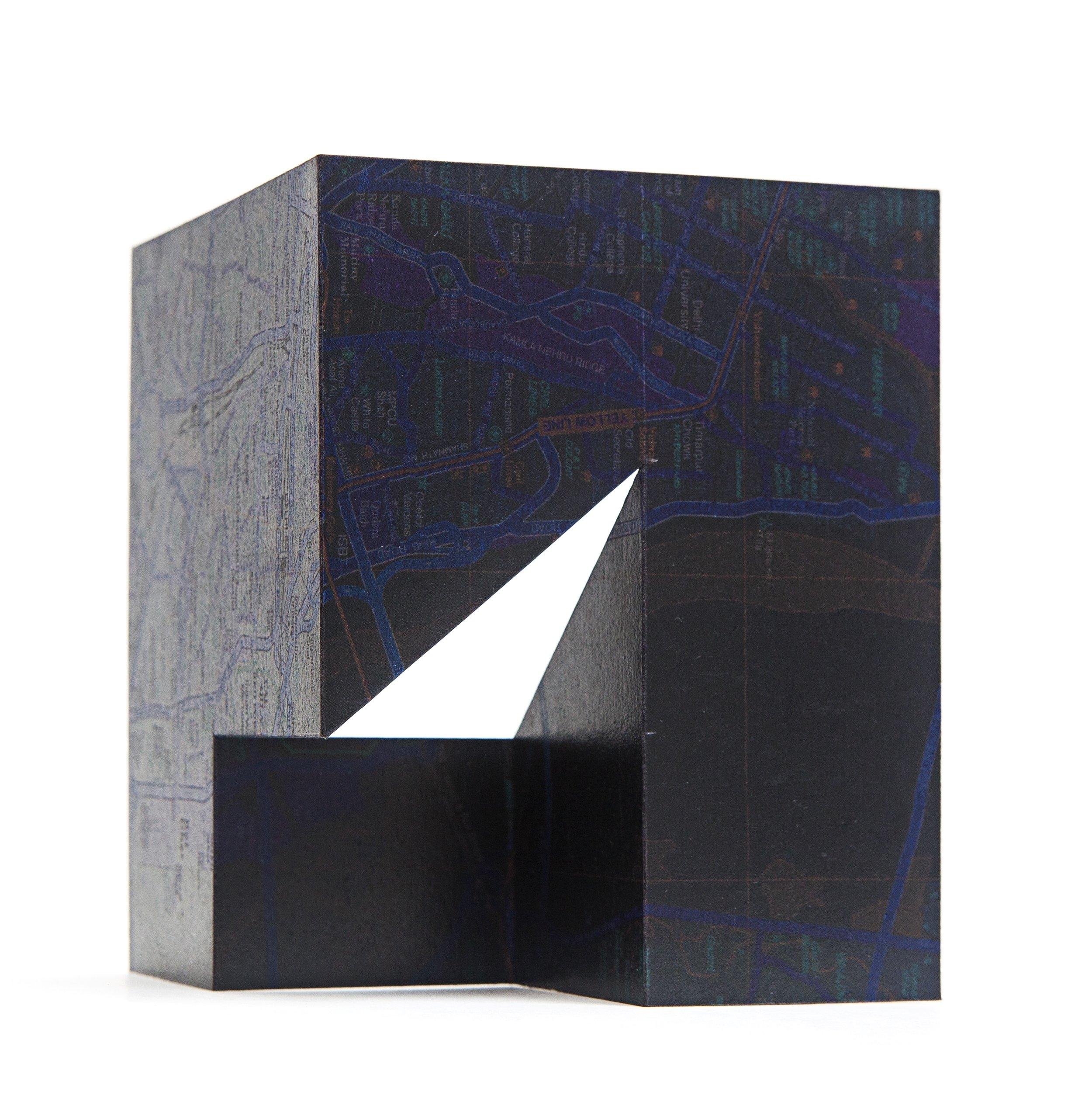

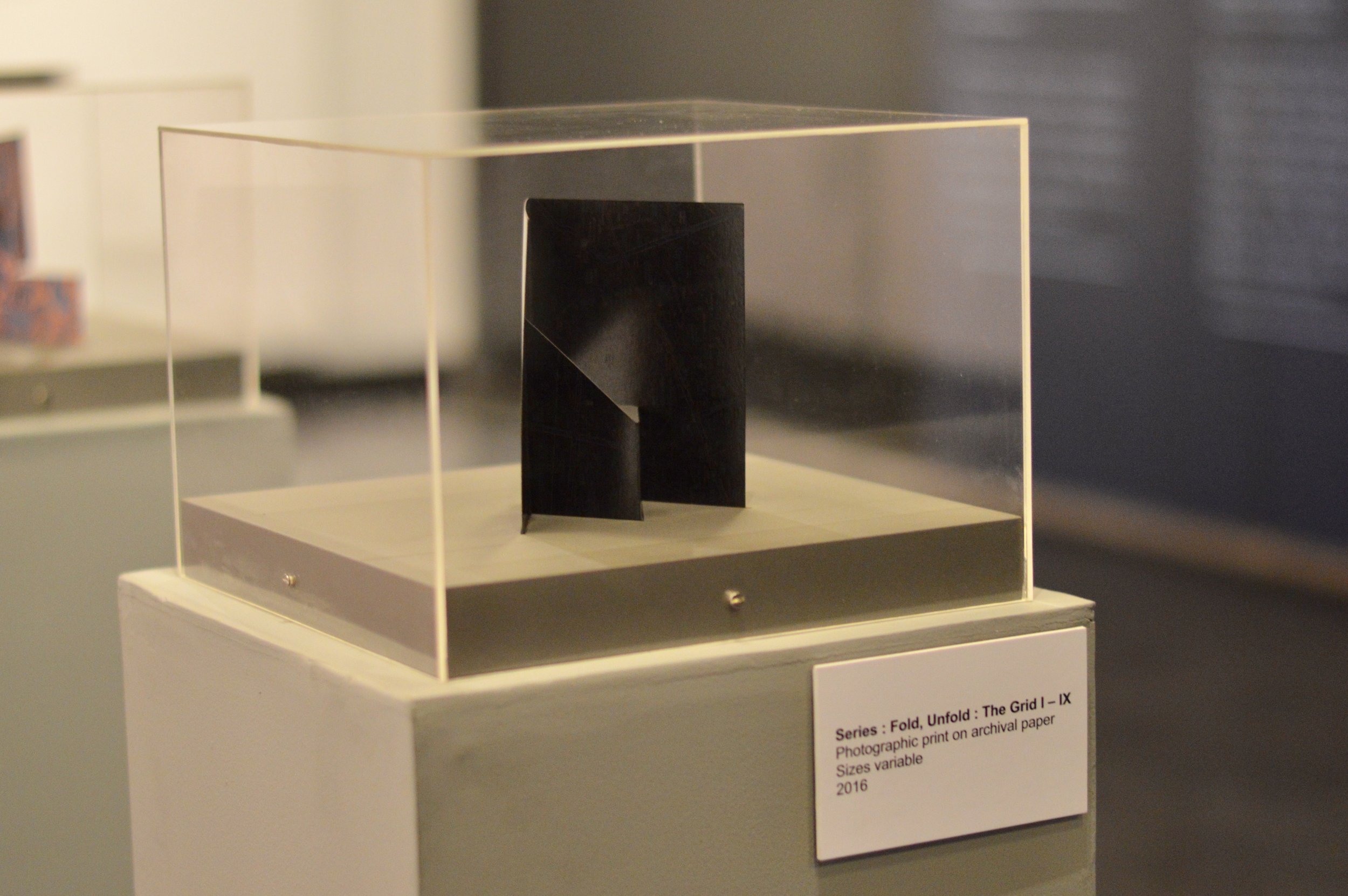

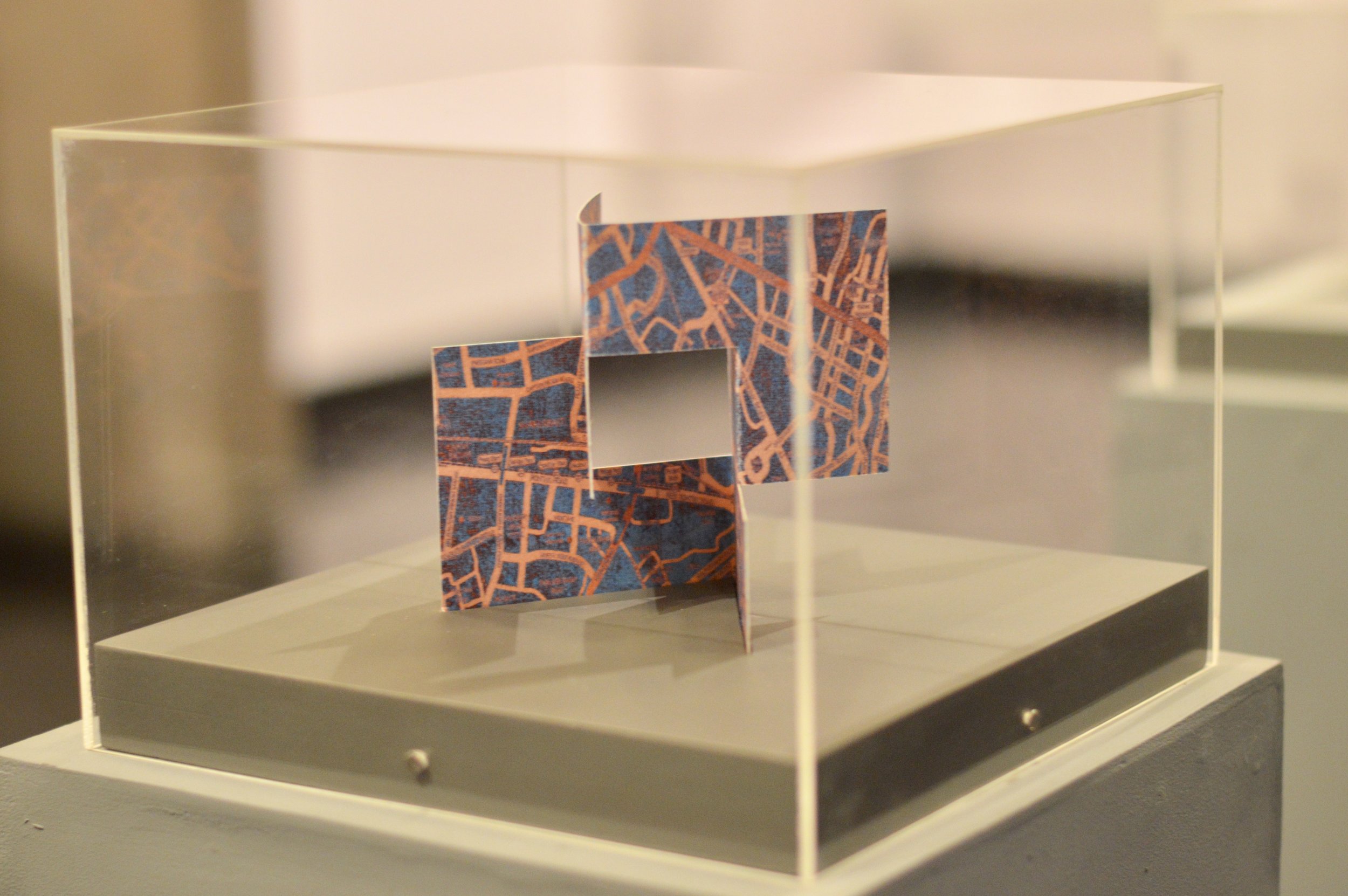
References:
- Venturi, Robert, Complexity and Contradiction in Architecture (Museum of Modern Art Papers on Architecture), 1977
- Butler, Cornelia H. and de Zegher Catherine, On Line: Drawing Through the Twentieth Century, MoMA, 2010
- Vidler, Anthony, Warped Space: Art, Architecture, and Anxiety in Modern Culture, 2000
- Deleuze, Gilles, Foucault, trans. Sean Hand, Minneapolis: University of Minnesota Press, 1988
- Deleuze, Gilles, The Fold: Leibniz and the Baroque, 1993
